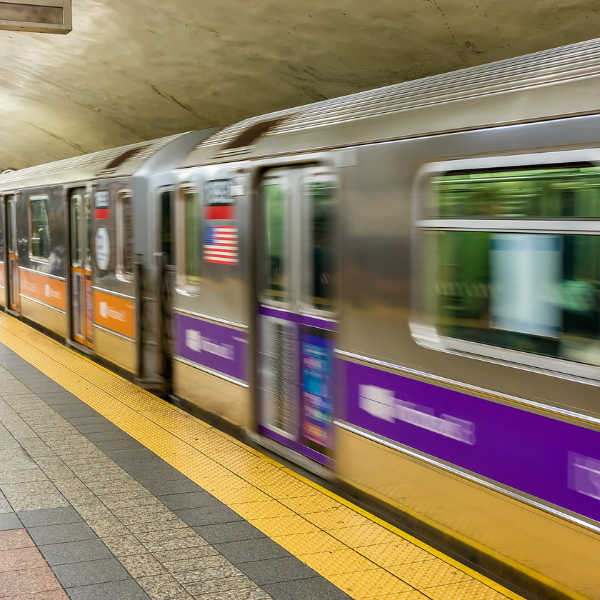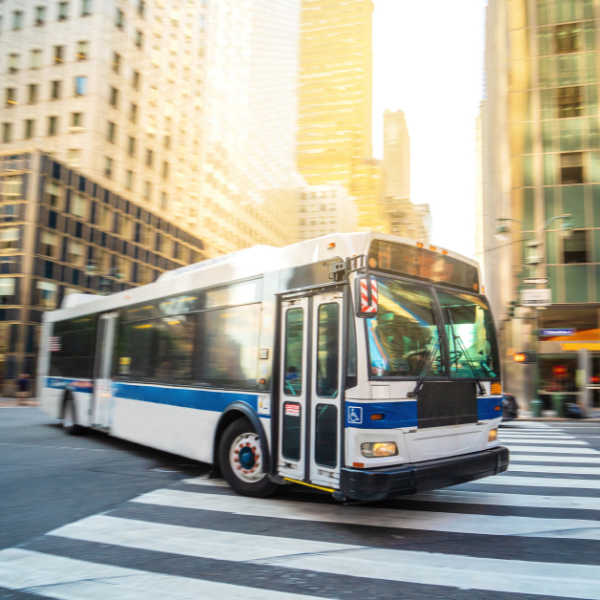Mass Transit
- The NYPIRG Straphangers Campaign fights for safe, reliable, accessible, and affordable New York City mass transit, offers critical information to the public, and empowers riders.
- Check out the results of the 2025 Pokey, Schleppie, and Mazel Awards for New York City bus service!

The NYPIRG Straphangers Campaign serves as a voice for New York City’s eight and a half million daily subway and bus riders. Since 1979, we have organized the riding public to speak up for affordable fares, more attractive service, and the continued rebuilding and expansion of public transit.
In a city like New York, mass transit defines where you live, where you play, and where you go to school. It is the “great equalizer” of opportunity and why accessible, affordable, and safe transportation is so important. When the Straphangers Campaign was founded in 1979, New York City's mass transit system had deteriorated to a point that seemed almost beyond repair. Track fires, delays, broken doors, graffiti, and buses in marked disrepair were a regular occurrence. Ridership plummeted, and businesses cited poor transit as the leading reason for moving out of New York.
So riders organized. Over the last 45 years, our organizing efforts have brought massive improvements, including billions of dollars in funds to buy new subway cars, fix stations, repair tracks, and expand the system. We also helped to win unlimited-ride MetroCards and fare discounts for low-income New Yorkers. Most recently, we won a commitment from city and state transit agencies to redesign and improve local bus service, as well as an over $15-billion-dollar investment in funding for transit infrastructure over the next decade with the implementation of congestion pricing.
Despite our many victories, our advocacy is needed now more than ever. The pandemic drove half the city off of public transportation and into personal cars amidst a climate emergency, contributing further to air pollution and street congestion. The cost of living has skyrocketed, as the Metropolitan Transportation Authority (MTA) hikes fares. Our buses are still the slowest in the country, moving at an average speed of just over eight miles per hour citywide.
There is still much work to be done to ensure that all New Yorkers have access to the reliable, affordable, and safe public transportation that they deserve. Straphangers have consistently demonstrated that we can push city, state, and MTA officials to meet rider needs when we organize. It is possible for New York City to have a world class public transportation system, but New Yorkers need to see results.
Bus Turnaround Campaign

New York City’s subway system is one of the largest in the world, with 472 subway stations across the boroughs and enough rail to reach from New York City to Chicago. Yet, despite the size of New York City’s vast subway network, less than two-thirds of New Yorkers live within walking distance from a subway.
Subway and rail “deserts” particularly affect more marginalized communities, many of whom depend heavily on bus service for travel. In New York, 75% of bus riders are people of color, 12% are foreign-born, and over 15% are over the age of 65. The average salary of a New York City bus rider is $28,455, compared to that of the average subway rider, which is $40,000.
The best way for the transit gap among communities to disappear is for more frequent and effective quality bus service to exist where there are transit deserts. Building new subways or other rail is simply too slow and too costly to be the only immediate solution, or even the main solution. For instance, the first phase of the Second Avenue subway – three stations – cost over $4.5 billion and a considerable amount of time.
Connecting communities by bus service is a far more viable option. Yet, as bus riders know from bitter daily experience, bus service currently is unacceptably slow and unreliable. Prior to the pandemic, daily ridership on New York City buses was about two million trips. Relative to the population as a whole, these riders are more likely to be people with low incomes or people of color. The MTA and New York City Department of Transportation must prioritize the needs of Black and brown New Yorkers, otherwise the longstanding disparities magnified by COVID-19 will be exacerbated.
As a leading member of the New York City Bus Turnaround Campaign, the Straphangers Campaign has taken a multi-year approach to fixing the city’s long-ailing bus service. We are developing a base of riders who are willing to share their story, advocate for better bus service, and engage in a lengthy political process to win change.
Fair Fares
Along with coalition partners, the Straphangers Campaign was instrumental in the fight to win Fair Fares, a program that provides half-priced MetroCards to low-income New Yorkers. Our advocacy in the years since has helped to win substantial funding and eligibility expansions in the New York City budget.
Still though, there are hundreds of thousands of New Yorkers who are eligible for the program but are not enrolled. According to the most recent census data, roughly 900,000 New York City residents live in poverty, but only just over 320,000 low-income New Yorkers are enrolled in the program. Additionally, a recent study found that 90% of CUNY community college students use mass transit to commute to school and identified that “the challenge of affording a MetroCard came up more than any other single barrier” in college degree completion. For most New York City students, paying for mass transit is an integral part of their higher education budget, and the rising costs can result in students choosing between paying for food or textbooks and getting to class.
New York City should boost outreach programs to help eligible New Yorkers apply for the benefit, and Fair Fares should be expanded to include all current CUNY students, and to include New Yorkers at 200% of the federal poverty level.
Green Transit, Green Jobs
The NYPIRG Straphangers Campaign is proud to be a member of the ElectrifyNY coalition and work at the vital intersection of mass transit and environmental protection. According to the Climate Action Council Scoping Plan, the transportation sector is responsible for approximately 28% of New York's total greenhouse gas emissions (GHG) – the second largest source of GHG emissions in the state – and private electric cars are only part of the answer to this problem.
The Green Transit, Green Jobs bill addresses this issue by mandating that transit agencies across the state begin to transition their diesel bus fleets by purchasing only zero-emission buses after 2029. Bus riders are well aware of the health hazards of living, working, and going to school in neighborhoods plagued by air pollution. Several New York communities have the highest reported rates of asthma in the country. Toxic exhaust from diesel buses compound existing air quality burdens – particularly in environmental justice communities.
New York must support riders who depend on public buses and set the state on a path to achieve the goals of the Climate Leadership and Community Protection Act (CLCPA). The bill also includes several labor provisions that will ensure that the state’s investment in creating high-quality jobs. By addressing climate pollution and prioritizing a fair and just transition, this policy is a win-win for New Yorkers on all fronts.
Congestion Pricing
NYPIRG’s Straphangers Campaign helped lead the passage of congestion pricing, a new policy to toll drivers who drive into Manhattan below 60th Street. Congestion pricing will introduce billions of dollars annually to improve public transportation and reduce air pollution from the city’s clogged streets – car traffic in New York City hit a new all-time high in late December of 2023.
To ensure that infrastructure is accessible for riders, to address regular maintenance upgrades, and prepare for more frequent and intense storms from the climate crisis, the time for investment in public transit is now. Congestion pricing revenues are key. After a lengthy review process and public comment period, congestion pricing officially went into effect on January 5, 2025. To date, the program is a huge success, with reduced traffic, fewer crashes and a new funding stream for the MTA that is raising significant revenue.

